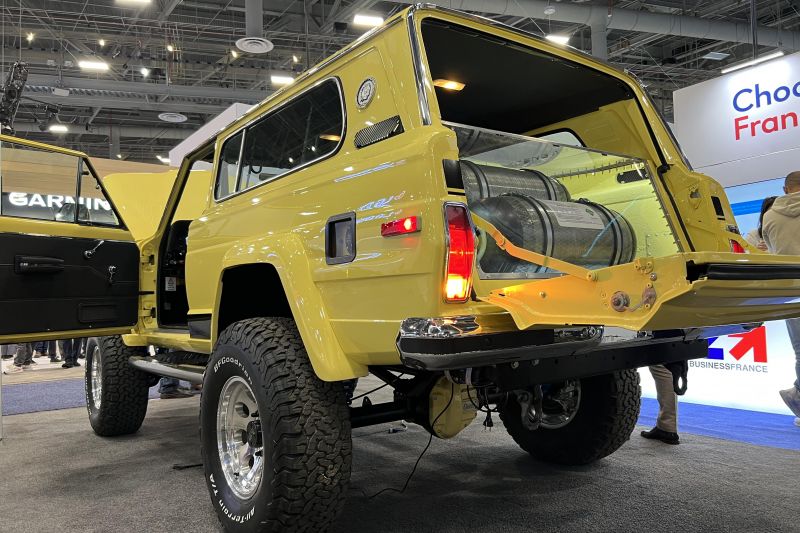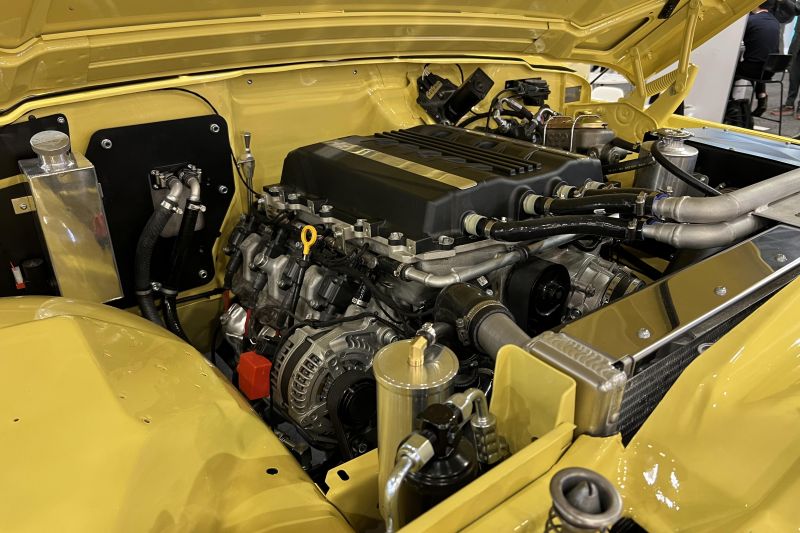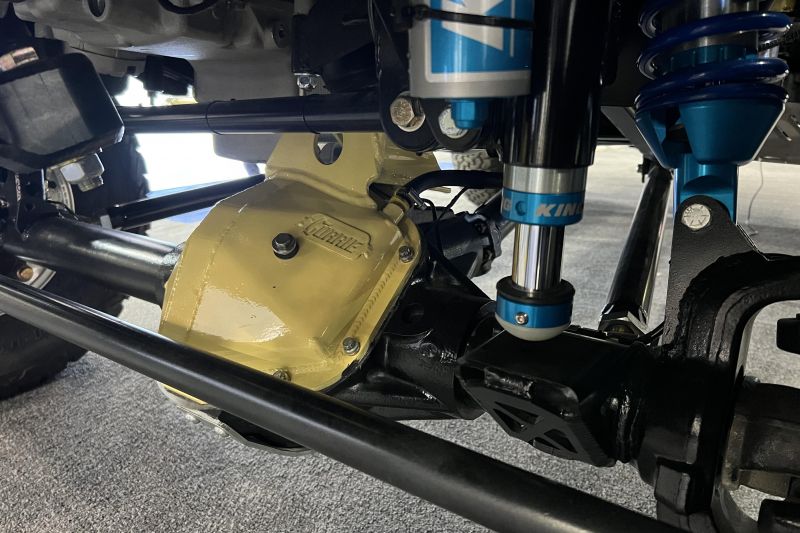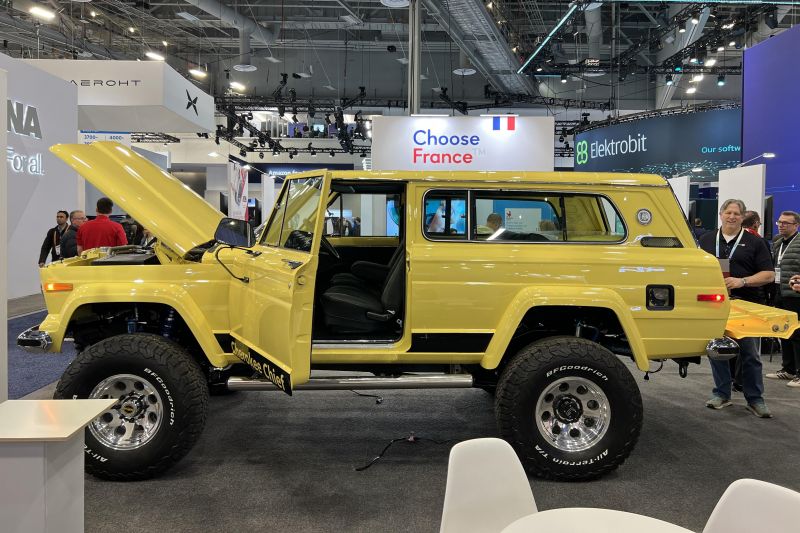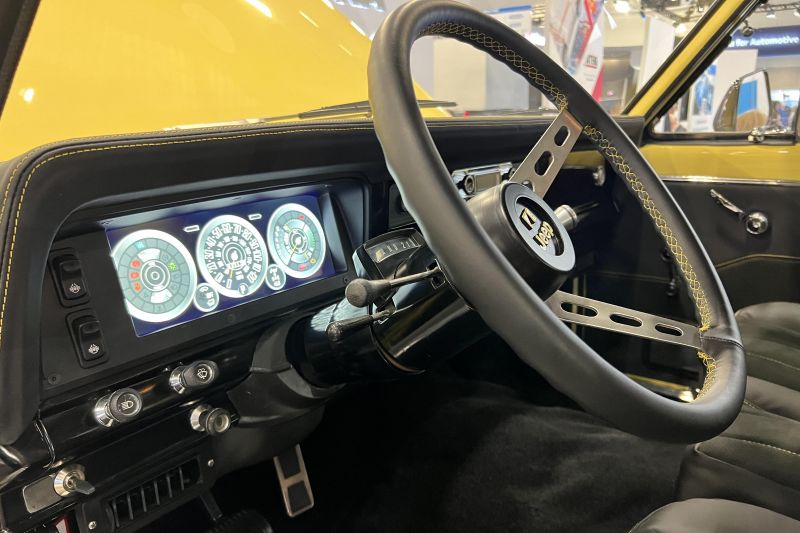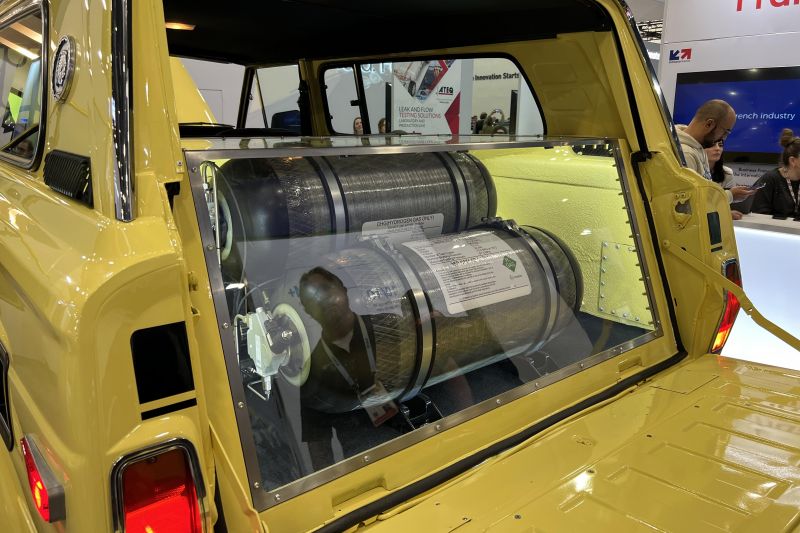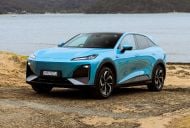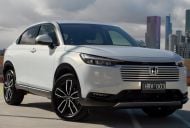At the recent CES event in Las Vegas, there were numerous new electric and hybrid vehicles. But one unique vehicle stood head and shoulders above them all, sporting an older technology built around a modern engine and all installed in an old classic.
Could this be the common sense alternative to EVs many of us ‘die-hards’ have been waiting for?
CES (Consumer Electronics Show), an event put together by the Consumer Technology Association, is a massive new tech expo featuring everything ‘cutting edge’ within the fields of electronics and software.
The show sprawls across four halls of the Las Vegas Convention Centre in the US state of Nevada, and is held in the second week of January every year.
It highlights everything from the latest medical equipment through to developments in AI, VR, AR, robotics and of course every type of electric vehicle (cars, bikes, dirt bikes, water propulsion, scooters, earth movers, drones and more).
While the show was distinctly focussed on a plethora of new electric cars, there was one small glistening ray of hope and nostalgic sanity in a display vehicle born from the collaboration between GCK and Motul!
GCK is a group of industrial companies offering technological solutions to accelerate the decarbonisation of transport while Motul is an international French company specialised in the formulation, production and distribution of high-performance motor oils with a known expertise in the area of synthetic lubricants.
Beginning with a program in 2022 to improve battery performance, the collaboration between the two saw the development of a highly specialised dielectric heat transfer fluid in which the entire battery is immersed, helping to control heat build-up caused by high-speed charging, while helping to prevent the spread of thermal runaway.
The success of this program saw the two companies look at other ways of working together and after a merger of sorts, the pair began looking at ways for Motul to assist with some of GCK’s developing engine technologies which includes hydrogen-powered engines.
To highlight the success and diverse benefits of this, a very distinct customer build featuring the collaborative technology was brought to this year’s CES.
Nestled deep within the ‘vehicle focussed’ West Hall of the CES event, was a beautifully restored 1976 banana yellow Jeep Cherokee Chief, sporting GCK’s hydrogen powered 6.2 litre V8 hydrogen internal combustion engine.
Motul’s contribution included the development of an engine lubricant able to cope with the challenges of hydrogen power, such as the sensitivity to abnormal combustions, the risk of emulsification due to the greater production of water and particulate emissions in the exhaust dependent on the specialised lubricant.
As a fully functional real-world build, this amazing remodelling will serve as a test bed for the two groups to explore the hydrogen retrofit market within the US and hopefully beyond!
From the ground up, the build has created a modern and practical platform to make the most of the powertrain while maximising the comfort, drivability and thrill.
Custom off-road solid axles front and rear are located with triangulated five-link suspension arm configurations controlled by remote reservoir King Shock coil overs and hydraulic bump stops.
The chassis was taken back to bare metal, powder coated and modified with the required suspension, engine and drivetrain mounts.
The body was sand-blasted, prepped with painstaking care and painted in a stunning canary yellow (although we also refer to it as banana yellow).
The interior has been fully re-trimmed and modernised with a full digital instrument cluster finishing off the overall feel of a modernised classic with all the bells and whistles yet still the character, pizazz and impact of a legendary off-road warrior.
Particular attention has been applied to create fuel cells also capable of dealing with the complexities of storing hydrogen. Inner steel cylinders are encased in a carbon-fibre shell to ensure the stability, integrity and protection of the fuel.
While the setup is designed specifically to highlight the technology, future applications would be far less intrusive and more homologous with the vehicle to ensure the retention of cabin space.
Technically referred to as the GCK Foenix H2 hydrogen internal combustion engine (HICE), the 6.2-litre V8 is aimed at tackling the urgent need for sustainable transportation without the ethical implications of manufacturing modern electric vehicle (EV) batteries, the excessive loads EVs will place on our insufficient electrical grids and the burden of recycling the chemicals and components of EV batteries.
These advancements are expected to reshape the future of mobility, making it more eco-friendly and efficient. It is in essence a cleaner transportation option, pioneering green solutions for the automotive industry that will pave the way for a carbon-neutral future where mobility is synonymous with sustainability.
While EVs retain the attention for carbon-neutral technology, this project squarely puts hydrogen energy back into the conversation. It’s technologically feasible, it offers the same or better environmental results as EV and it makes sense economically.
At the end of the day, you really need to ask the questions: is EV the only viable solution, is it the best solution and have we been led down the EV path as a trend more than a truly viable option?
Whatever your answers are, most automotive enthusiasts will see the value not just in the hydrogen movement but in the retention of the internal combustion engine.
No matter your language, the rumble, thrill and exhilaration of driving an actual V8-equipped vehicle with cubic inches and not Watts still holds all of its original appeal, yet it is environmentally clean and green. What a future that would be!

